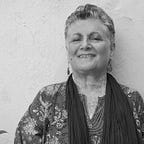Kabul from Afar: Heart Broken in Delhi
Sitting in Delhi, I am a little numb, slightly teary, and very sad.
The news from Afghanistan over the last 72 hours is shocking. It has been bad for a few months, but who would have thought the Taliban would be in the outskirts of the capital Kabul, and inside the Presidential Palace in the last 48 hours.
My association with Afghanistan began in March 2004, when I visited the country for the first time. It was recovering from being a conflict zone since 1986, occupied by the Russians and then the Taliban, since 1996. Despite the lack of basic infrastructure and anything remotely that would suggest Kabul was a city, I fell in love with it.
My last visit to Kabul was in April 2016. Between 2004 and 2016, I made about a dozen trips to Afghanistan, mostly in Kabul, for a period of two weeks to six months. With every visit, my love for the country grew. I admired the spirit and faith of the Afghans in building a 20th century nation. Their kindness and generousity overwhelmed me.
I worked as a trainer with journalism students, did evaluations and assessments of projects and institutions, strategic planning for women’s organisations and capacity building.
As far back as 2004, the Taliban made their presence felt in the south of the country. They never really stopped, slowly, inching their way into the lives of Afghans. Aided and abetted by other countries and fundamentalist elements, they grew bolder.
During this time, the international community gave generously to support security and development in all sectors — education, health, culture, environment, women’s rights, and the establishment and expansion of a free media. But the dark shadow of the Taliban never left Afghanistan.
In 2012, on a trip to Bamiyan, a province to the north of Kabul, I had to take an 8-hour flight. The road trip would have taken a couple of hours. The road was excellent, I was told, but unsafe. A week before my trip, two students had their throats slit en-route.
During my time in Afghanistan, I saw women bloom. They were going to school, university, and entered the workforce. They earned money and supported their families. Migrants returning from Iran and Pakistan were able to call Afghanistan ‘home’ again. Those who had managed to get to Europe and North America returned for short stints as consultants and advisers. While they had made homes in other countries, a part of them was still in Afghanistan, I could tell.
Colleagues who had not left the country during the reign of the Taliban told horror stories of how they were treated and especially their mothers, sisters, and wives. It was a dark period in the history of the country. Yet, these colleagues had no plans to leave the country for greener pastures, so deep was the love for their country. I admired them.
As a collector I found their kilims, wooden furniture, glass work and pottery fascinating. All handcrafted, it was from another time, skills sometimes developed centuries ago. Now revived. From Nuristan, wooden furniture, panted with natural pigments. Glass items from Herat, tinted with indigo. And from Istalif, glazed pottery. In the markets, fresh vegetables and fruits from the provinces of Afghanistan. And dry fruits galore.
I was aware of the corruption and leakages in the development of the country. It’s true that Presidents Hamid Karzai and Ashraf Ghani didn’t always do what was best for the Afghan people. They were Afghans who had a global view, but couldn’t deal with the complexities of the Afghan people. A long history of tribal clashes, warlords and religious differences made it difficult to govern.
In some ways, the modern nation state that Afghanistan became since 2001 wasn’t that universal to Afghans. It was a largely western model of governance and development that many Afghans, especially those deeply religious or in the outlying areas, couldn’t understand or accept. Slowly more inequity was creeping in and there were further divisions between people. In developing these models, traditional ways of governance, such as justice, were overlooked and frowned upon.
A blame game on what went wrong in Afghanistan isn’t useful. The Taliban didn’t suddenly come back into power because US President Biden sped up the withdrawal of US forces. Even if the handful of forces had stayed back, they couldn’t have made a difference. But who knows what could have happened? What we do know is that Afghanistan has been a pawn for many Western powers for a long time.
Right now, Afghans are afraid not only for their lives, but for their present and future. Stories out of Kunduz, which the Taliban overtook a week ago, are horrifying — a complete breakdown of services — water, electricity, and garbage collection. Soon there will be shortages of food, disease, and deaths. If Afghans and the global community thought and felt that governance under the two Presidents was bad, they can’t imagine how awful it will be under the Taliban.
There will be suffering, acute suffering. Not everyone will be able to leave the country. There are appeals for funds to assist groups in Afghanistan, safe houses for women and children, and for governments to condemn the Taliban. There are signature campaigns for nations to help. What will help? It’s not clear.
I cherish my memories of a wonderful land that I had the opportunity to experience and grow to love. I am apprehensive what will happen to the friends I made, who live there with their families. They are in my thoughts.
I am sad and heartbroken.
